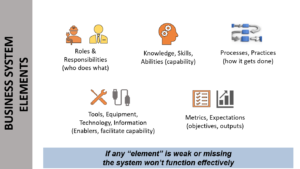What Is Lean Selling—and Why Does It Matter?

Many manufacturers invest heavily in improving operations, reducing waste, and increasing efficiency on the production floor through lean manufacturing principles. But when it comes to sales, it’s not uncommon for teams to fall back on instinct, charisma, or trial and error. That’s where Lean Selling comes in.
Lean Selling applies the discipline of lean thinking to the sales process. It’s about working smarter, not harder focusing on qualified opportunities, reducing wasted effort, and closing more deals by following a clear, repeatable system.
One of the key concepts behind Lean Selling is understanding the “Buyer’s System.” Most buyers have their own process for gathering information, comparing options, and delaying decisions. Without a structured approach, sellers often fall into the trap of giving away their expertise for free, chasing prospects who will never buy, or submitting proposals that go nowhere.
Lean Selling helps sales professionals identify real opportunities early in the process. By asking better questions and uncovering “compelling reasons to buy,” sellers can determine if a prospect is a good fit—and move forward with greater confidence. It also involves getting clarity on budgets and decision-making processes before investing significant time and resources into a potential deal.
Another core idea is consistency. Sales teams that use a documented, systematic process can track what’s working, learn from both wins and losses, and continually improve over time—just like a lean production line. This shift from “winging it” to working with a reliable sales framework leads to more predictable outcomes and less frustration.
Ultimately, Lean Selling empowers teams to stop relying on a few unpredictable buyers and start building a more sustainable pipeline. It’s about eliminating waste, maximizing value, and aligning the sales function with the same efficiency-focused mindset that drives success in operations.
Want to learn how to implement Lean Selling within your facility? Register for IMC’s upcoming Lean Selling – Having A Systematic Approach to Sales versus “Winging it”!





 In our recent blogs posts, we’ve discussed the challenging manufacturing environment of increasing customization and, with that trend, the need for improved job training as work continues to get more varied, complex and is always changing.
In our recent blogs posts, we’ve discussed the challenging manufacturing environment of increasing customization and, with that trend, the need for improved job training as work continues to get more varied, complex and is always changing.

 In our previous two posts, we discussed the worldwide trend of increasing product customization and specialization and the many implications of that. One being the introduction of more variation into our work processes from up-front selling and quoting through design, purchasing, manufacturing and distribution.
In our previous two posts, we discussed the worldwide trend of increasing product customization and specialization and the many implications of that. One being the introduction of more variation into our work processes from up-front selling and quoting through design, purchasing, manufacturing and distribution.